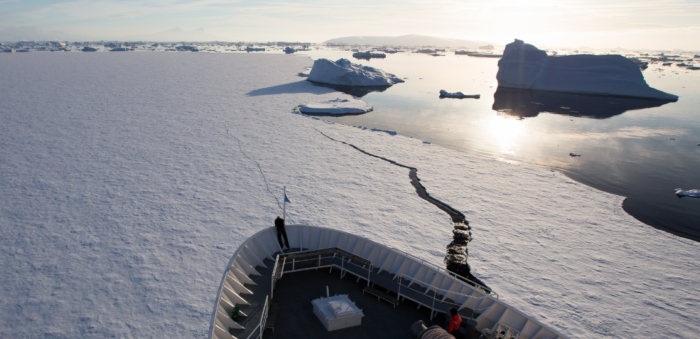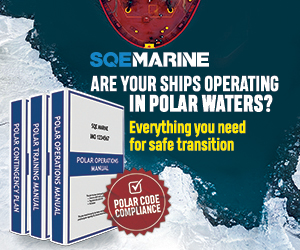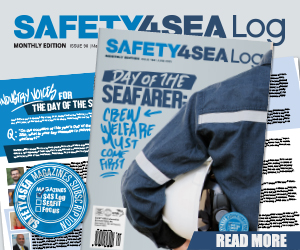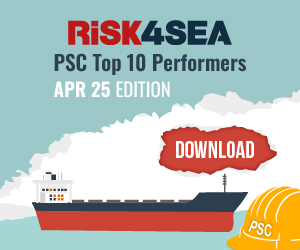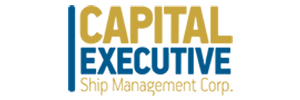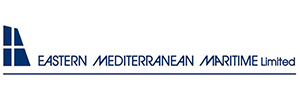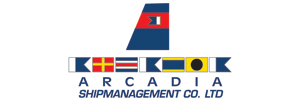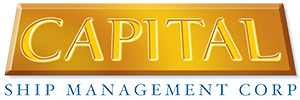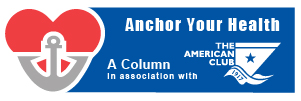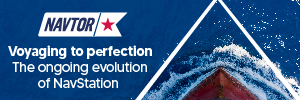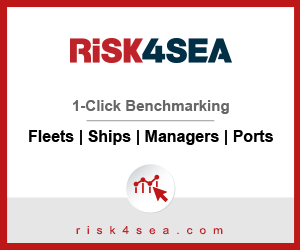Maritime trade between Arctic destinations and the rest of the world is expected to grow and an increasing number of ships are now conducting voyages in polar waters. For this reason, new joint guidelines from the International Chamber of Shipping (ICS) and the Oil Companies International Marine Forum (OCIMF) aim to support shipping companies by providing advice on how to develop a Polar Water Operational Manual (PWOM).
Technical developments in ship design and equipment continue to enable more and more ship operations in remote polar areas, despite challenging and unpredictable sea and weather conditions.
[smlsubform prepend=”GET THE SAFETY4SEA IN YOUR INBOX!” showname=false emailtxt=”” emailholder=”Enter your email address” showsubmit=true submittxt=”Submit” jsthanks=false thankyou=”Thank you for subscribing to our mailing list”]
The new guidelines provide the means for shipping companies and Masters to develop a comprehensive PWOM tailored to the needs of their individual ships, taking into consideration the environmental hazards and the nature of their operations.
Develop a Polar Water Operational Manual
Preparation is necessary for a PWOM and the documentation and calculations that are needed for its validation. Before a PWOM is developed the report recommends that the shipping company or Master understand the specific requirements of the relevant Administration or Recognised Organisation regarding the level of detail in drawings, plans, manuals and documentation as well as requirements for the approval of the Polar Code Operational Assessment and the PWOM.
The PWOM includes various subjects from engineering systems details to monitoring procedures, and emergency provisions and planning. As such, the PWOM is also a combination of owner/operator procedures and other information as appropriate.
The following steps are recommended to prepare a PWOM:
- Identifying associated hazards;
- Confirm or define the operating area;
- Assess or anticipate the operational limitations;
- Carry out a detailed operational assessment;
- Update procedures based on results of the operational assessment;
- Install or upgrade equipment or systems if necessary.
In prepare the PWOM, operators should:
- Base the PWOM contents around the outcome of the operational assessment and include a copy of the assessment in the appendix;
- Include references to the company’s Safety Management System (SMS), and also any relevant procedures in the PWOM in full;
- Check with the validating organisations what contents are required; as variations may occur;
- Ensure the PWOM is tailored to the specific type of ship, operation and environmental conditions;
- PWOM should reference International Convention for the Prevention of Pollution from Ships (MARPOL) documents, such as the Shipboard Oil Pollution Emergency Plan/ Shipboard Marine Pollution Emergency Plan (SOPEP/SMPEP).
Operational capabilities and limitations
The PWOM should describe how decisions as to whether ice conditions exceed the ship’s design limits should be made, taking into account the operational limitations on the Polar Ship Certificate. An appropriate decision support system, such as Canada’s Arctic Ice Regime Shipping System, and/or the Russian Ice Certificate as described in the Rules of Navigation on the water area of the Northern Sea Route, can be used.
Bridge personnel should also be trained in the proper use of the system to be utilized. For ships that will operate only in ice-free waters, procedures to ensure that the ship will be kept from encountering ice should be established.
Forecasts of environmental conditions
The PWOM should establish the means and frequency for provision of ice and weather information. Where a ship is intended to operate in or in the presence of ice, the manual should set out when weather and ice information is required and the format for the information.
When available, the information should include both global and localized forecasts that will identify weather and ice patterns/regimes that could expose the ship to adverse conditions.
The frequency of updates should provide enough advance notice that the ship can take refuge or use other methods of avoiding the hazard if the conditions are forecast to exceed its capabilities.
The PWOM may include use of a land-based support information provider an effective method of sorting through available information, thereby providing the ship only with information that is relevant, reducing demands on the ship’s communications systems.
The manual may also present instances in which additional images should be obtained and analysed, as well as where such additional information may be obtained.
Risk mitigation in limiting environmental condition
As ice can cause severe damage to a ship if it is not properly understood or respected, the following should be considered:
- Determination of severity and quantity of ice;
- Safe speed in the prevailing ice and when operating close to icebergs and growlers;
- Approaches to an ice edge;
- Posting of additional lookouts;
- Using searchlights at night/infra-red cameras;
- Range of visibility;
- Using ice experts;
- Additional assets for ice reconnaissance.
Ship emergency response
The PWOM should contain procedures to be followed in preparing for a voyage and in the event of an incident arising. Information about communication channels to Maritime Rescue Sub-Centres (MRSC) in polar regions should be on board.
The following should be taken into consideration:
- External assistance in remote areas of the polar regions may not be readily obtainable due to lack of or limited infrastructure, facilities or maritime traffic;
- Challenges in communication, e.g. due to language barriers or technical issues;
- Establishing regular contact with ships in the vicinity to be aware of potential assistance in the region, if needed;
- Participating in reporting systems, such as NORDREG Canada and Greenpos, as appropriate.
Pollution prevention
Due to the ecologically sensitive nature of polar waters and their remoteness from centres of population and oil spill response equipment, operators should ensure all precautions are in place to prevent pollution occurring.
The following items should be considered when updating the MARPOL-related plans/manuals for operations in polar regions:
- Reducing potential pollutants taken into polar waters;
- Waste tanks emptied as far as possible before entering polar waters;
- Pollutants should not be carried in tanks directly adjacent to the hull;
- Type of fuel used;
- Removal of ice/snow from deck;
- Tank vents kept ice free;
- Carriage of dispersant and applicators;
- Having the capability for limited overside response, over and above Shipboard Oil Pollution Emergency Plan (SOPEP) kit.
You may see more information in the following PDF
































